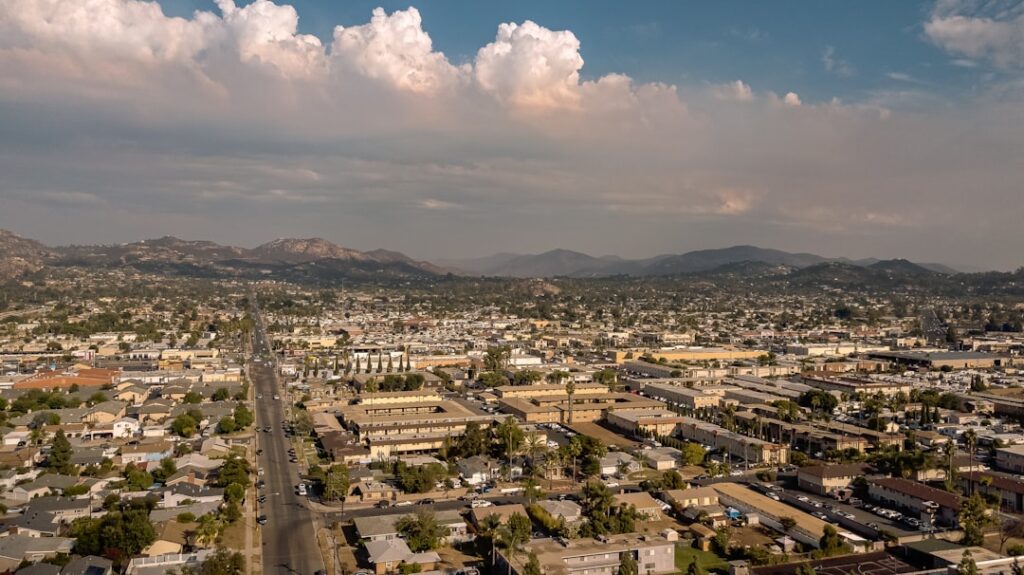California, the state with the largest population in the US, has long been a center of innovation and economic activity. It has, however, experienced its fair share of unemployment issues, just like many other states. It is imperative that policymakers, economists, & citizens alike comprehend the patterns & causes underlying California’s high unemployment rate. With regard to California’s unemployment trends, historical background, contributing factors, economic impact, government initiatives, and future projections, this article seeks to give a thorough introduction. Changes in the unemployment rate have an effect on the economy & people living in California, making it a contentious issue for many years. It is clear from looking at California’s historical unemployment rate overview that the state has seen both booms & busts in its economic history.
Key Takeaways
- California has experienced fluctuating unemployment trends over the years, influenced by various factors.
- The historical overview of unemployment rates in California shows a pattern of highs and lows, often mirroring national trends.
- Factors contributing to unemployment in California include economic downturns, technological advancements, and shifts in industry demand.
- Unemployment has a significant impact on California’s economy, affecting consumer spending, tax revenues, and social welfare programs.
- Government initiatives to address unemployment in California include job training programs, tax incentives for businesses, and infrastructure investments.
There exist a multitude of internal and external factors that contribute to the unemployment rate in California. California’s economy is greatly impacted by unemployment, which has an effect on many different industries and demographic groups. Throughout the years, the government has launched various programs aimed at reducing unemployment in California, with differing levels of effectiveness.
Future estimates for California’s unemployment rate give us a glimpse of possible patterns and difficulties the state may encounter in the years to come. A detailed and dynamic pattern of fluctuations can be seen in the historical overview of California’s unemployment rates. California has seen periods of economic expansion and prosperity over the previous few decades, as well as periods of recession and high unemployment. The state saw a severe economic downturn in the 1980s, which caused unemployment rates to rise.
However, California went through a period of economic expansion in the late 1990s & early 2000s, which resulted in a drop in unemployment rates. California was especially hard hit by the Great Recession of 2008, which led to a sharp rise in unemployment rates. The state has since recovered gradually, but citizens & policymakers are still concerned about the high unemployment rate. California experienced a sharp increase in unemployment rates during the COVID-19 pandemic as a result of company closures and employee layoffs.
| Year | Unemployment Rate (%) | Labor Force Participation Rate (%) |
|---|---|---|
| 2015 | 6.2 | 62.4 |
| 2016 | 5.5 | 62.8 |
| 2017 | 4.8 | 63.2 |
| 2018 | 4.3 | 63.5 |
| 2019 | 4.1 | 63.8 |
The pandemic emphasized the susceptibility of some industries to shocks from the outside world and deepened already-existing economic gaps. Knowing the historical background of California’s unemployment rates is essential for creating workable plans to deal with the state’s current problems as it continues to manage the pandemic’s aftermath. Policymakers can make wise decisions to support the state’s economy and workforce by looking at historical trends & patterns, which can provide important insights into possible future scenarios. Unemployment in California is caused by a number of factors, including industry-specific difficulties & general economic conditions.
The economy of the state is diverse and includes a number of industries, each with unique opportunities & challenges, such as manufacturing, technology, entertainment, and agriculture. Recessions and other economic downturns, such as financial crises, can cause job losses and layoffs in a variety of industries, which can affect the unemployment rate as a whole. Automation and other developments in technology have also changed the nature of work & the skills that employers need. Also, California’s unemployment trends are influenced by demographic variables.
Certain groups, such as minorities or those with lower levels of education, may have higher unemployment rates due to disparities in access to opportunities, education, and training. Within the state, there are geographical differences as well; rural areas deal with different issues than urban centers. Also, outside variables that affect employment prospects in the state include trade regulations, natural disasters, and worldwide economic trends.
The COVID-19 pandemic brought to light the susceptibility of a number of industries, including retail, hospitality, and tourism, to outside shocks. Businesses in these industries lost a lot of jobs as a result of their inability to adjust to restrictions and lockdowns. In order to develop targeted interventions and support systems for affected workers & industries, California must have a thorough understanding of the complex factors that contribute to unemployment. California’s economy is greatly impacted by unemployment, which has an impact on both the state’s social & financial well-being. If people don’t have as much disposable income to support small businesses & boost the economy, high unemployment rates can result in lower consumer spending. This could have an impact on the retail, hospitality, & other consumer-driven industries, among other sectors.
Also, losing a job can make people more dependent on public assistance and social welfare programs, which puts a pressure on government funding. The social ramifications of unemployment extend to individuals and families, who may encounter financial difficulties and psychological strain as a result of job insecurity. Long-term unemployment can lead to mental health problems and social inequalities, underscoring the connection between social and economic well-being.
In addition, prolonged unemployment can cause skill atrophy and lower employability, which makes it harder for affected people to return to the workforce. Macroeconomically speaking, high unemployment rates can impede productivity and overall economic growth. Reduced workforce participation and a shrinking labor force may restrict the state’s ability to innovate and grow. In order to effectively address the effects of unemployment on California’s economy, a multimodal strategy that takes into account both immediate relief initiatives & long-term growth strategies is needed.
In an effort to assist employees, companies, and communities impacted by economic hardships, the government has launched a number of programs to combat unemployment in California. These projects include support for small businesses, job training programs, & workforce development initiatives. In order to manage unemployment benefits and offer assistance to job seekers, the Employment Development Department (EDD) is essential. The state government implemented emergency measures in reaction to the COVID-19 pandemic in order to offer financial support to people who lost their jobs as a result of the outbreak. In order to lessen the effects of widespread job losses and business closures, expanded unemployment benefits & relief programs were implemented.
In addition, specific assistance was provided to sectors like tourism and hospitality that were severely impacted by the pandemic in an effort to stabilize those industries & protect jobs. In addition, it has been suggested that funding for green projects and infrastructure improvements be allocated in order to address environmental issues and generate new jobs. The government hopes to foster long-term economic resilience and job growth in emerging industries by emphasizing renewable energy and sustainable development initiatives. In the future, government programs will be essential in tackling California’s unemployment problem.
Policies that place a high priority on industry diversification, education reform, & workforce development can help create a labor market that is more inclusive & resilient. A number of variables, such as demographic changes, economic trends, technology developments, and policy choices, will affect California’s unemployment estimates in the future. Forecasts show a slow reduction in unemployment rates as companies reopen and consumer confidence rises as the state continues to recover from the COVID-19 pandemic’s effects. On the other hand, adjusting to post-pandemic realities may present longer-term difficulties for some industries. It is anticipated that automation and technological breakthroughs will change the nature of the labor market, bringing with them both opportunities and challenges for workers in various industries.
Traditional roles may change or become obsolete, while the need for digital skills and the ability to work remotely is projected to rise. In order to adapt to these changes, employers must proactively fund education & training initiatives that give employees the necessary skills for new career opportunities. Future unemployment estimates for California are also impacted by changes in the state’s demographic composition.
Participation in the labor market is faced with opportunities and challenges due to an aging population and shifting workforce dynamics. Maintaining a vibrant and diverse labor force requires helping older workers as they approach retirement and involving younger generations in skill development and career pathways. Future estimates of California’s unemployment rate will also be influenced by state and federal policy decisions.
It is possible to address societal needs & generate new employment opportunities by investing in infrastructure, renewable energy, healthcare, and education. Also, trade regulations and international economic trends will have an impact on the state’s industry’s competitiveness and job generation. In conclusion, it is critical to comprehend California’s unemployment trends in order to address present issues and get ready for new opportunities. The state economy is dynamic and resilient, as demonstrated by historical trends that show it can overcome difficult times. Due to the complexity of the factors causing unemployment, specific interventions are needed to address both the needs of the industry and more general societal inequities.
Beyond financial indicators, social well-being, mental health, and long-term workforce development are all impacted by unemployment in California. Governmental actions are essential in supporting impacted people and companies & creating an atmosphere that supports long-term growth. Future unemployment projections for California highlight the need for proactive policies that account for changes in global economic dynamics, demography, and technology. California can establish itself as a frontrunner in generating new jobs while meeting societal demands by making investments in infrastructure, innovation, education, and training.
Governmental organizations, corporations, academic institutions, & community groups must work together to address unemployment. California may overcome present obstacles and lay the groundwork for future prosperity by cooperating to create inclusive policies and initiatives that promote workforce development and economic resilience.
If you’re interested in learning more about the challenges of navigating California’s unemployment system, you should check out the article “Navigating EDD: Tips for Reaching Them”. This article provides valuable insights and tips for individuals trying to access unemployment benefits in California, offering practical advice for those struggling to get through to the Employment Development Department.
FAQs
What are the current unemployment trends in California?
As of the most recent data, California’s unemployment rate is 7.9%, which is slightly higher than the national average.
How does California’s current unemployment rate compare to previous years?
California’s current unemployment rate is higher than it was before the COVID-19 pandemic, when it was around 4%. However, it has improved from the peak of 16.4% in April 2020.
Which industries in California have been most affected by unemployment?
The leisure and hospitality industry has been hit the hardest by unemployment in California, followed by the retail trade and education and health services sectors.
What efforts are being made to address unemployment in California?
The state government has implemented various programs to support unemployed individuals, including expanded unemployment benefits and workforce development initiatives. Additionally, there are efforts to stimulate job growth through infrastructure projects and investment in clean energy.
What are some potential long-term impacts of the current unemployment trends in California?
Persistent unemployment could lead to a decrease in consumer spending, a strain on social services, and a slower overall economic recovery. It may also exacerbate existing inequalities and disparities in the labor market.



